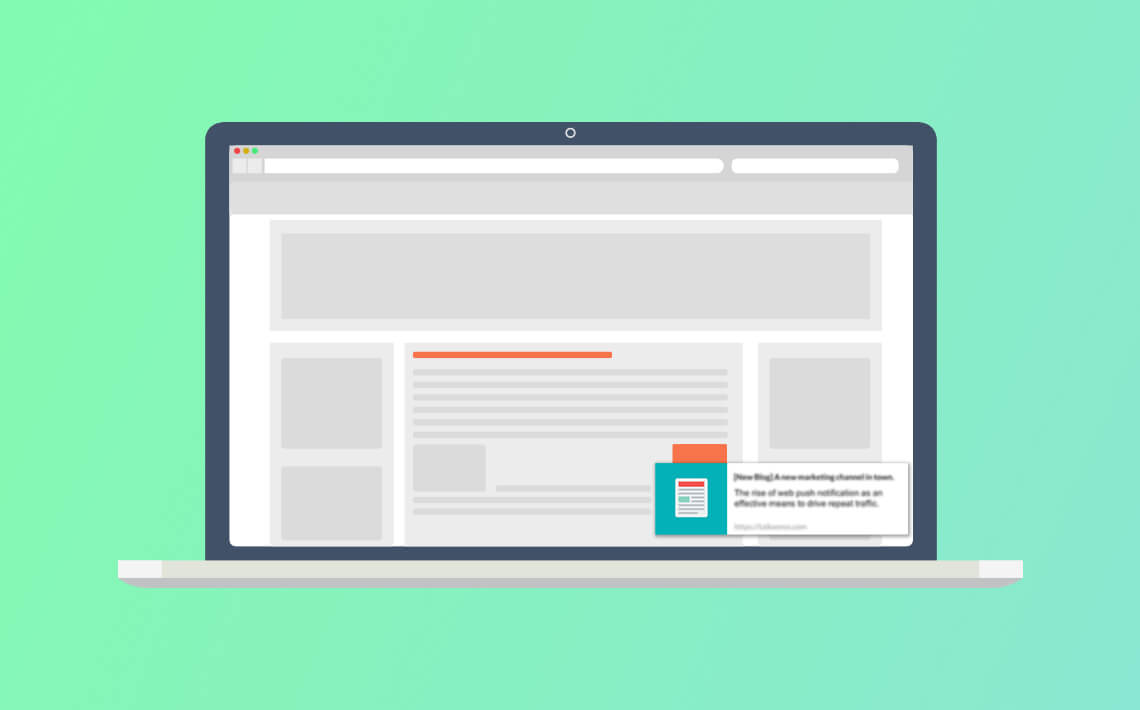
The rise of smartphones and mobile apps in the last decade supplied developers and marketers with one powerful weapon: the push notification. They could now send timely messages and offers to their users/customers. This, in turn, increased conversions and engagement. For years they were present only on the native mobile platforms (Android and iOS). However, in recent years push notifications have come to the web. They look quite like the in-app notifications but are sent by the browser instead of the mobile apps. They could be accessed on all devices, including desktop, android mobile, tablets, etc. We would outline some of their benefits that make them useful for your site:
Alternative to the email
The proven old-fashioned method to communicate with your web customers is the email. Although email newsletters and campaigns could be effective, they still have some weaknesses. The average open rate is only 20.81% in 2018(according to Mailchimp). The mailbox has also become a contested place as many businesses are vying for the user’s attention. Furthermore, email clients like Gmail are making it even harder by automatically shuffling emails in categories. If your email ends up in the promotions or updates tab, it is less likely to be seen as users focus mainly on their primary inbox. Thus push notifications are a good complimentary way to stay in touch with your clients. They are permission-based service and the user has to opt-in by just clicking allow on the pop-up in the browser when visiting your site. They do not have to fill in forms with their names and email address to subscribe where often they would leave rarely used email address.
Better engagement
Push Notifications are short and delivered instantly just like their native mobile counterpart. They enable you to send messages to web visitors even if their browser isn’t open. That makes web push a powerful tool for keeping your web audience engaged — and for re-engaging visitors who have stopped visiting. For example, one big problem in e-commerce is the abandonment of the shopping cart. A lot of users browse and add products to their shopping cart but leave the site before finishing the purchase. Sending them email may end up never opened. Employing timely push notification that prompts the user that he has some unfinished business may actually bring him back to the site. Jumia, a large African online electronics retailer, saw an increase of 9 times in conversions using the above-mentioned approach.
Instant Communication
Another benefit of web push notifications is the fact that is an instant communication channel. They arrive quickly to the screen of the user where he could see them within minutes. That makes them especially efficient when you’d like to communicate simple ideas urgently. For example, there is a 30% discount in your store in the next 24 hours. However, you should not overuse this. Only send notifications when your idea you want to communicate is timely, precise and relevant.
Save costs on building an app
Building an app is significant investment both in terms of development and support cost. With better mobile phones coming out every year and good wireless network speeds more people shop on their phones without needing an app. If you have well designed and optimised mobile site that implements browser push notifications, you could reap many of the benefits of a mobile app. This could be a good idea if you don’t have the budget to invest in an app. We have to note that the native mobile app still offers better User Experience, performance, check-out process etc. An alternative solution is to develop a Progressive Web App(PWA) . They combine the UX of a mobile app with the ease of accessibility of the mobile web.
They cover desktop
Another advantage of web push notifications is that they cover the desktop. Desktop still accounts for 37% of the web traffic(according to Stonetemple) and not going away anytime soon.
Clearly, web push notifications have the ability to drive more revenue to your website. You should consider including them in a wider omnichannel marketing strategy.
In the meantime, if you are looking to build a new website, drop us a line.
